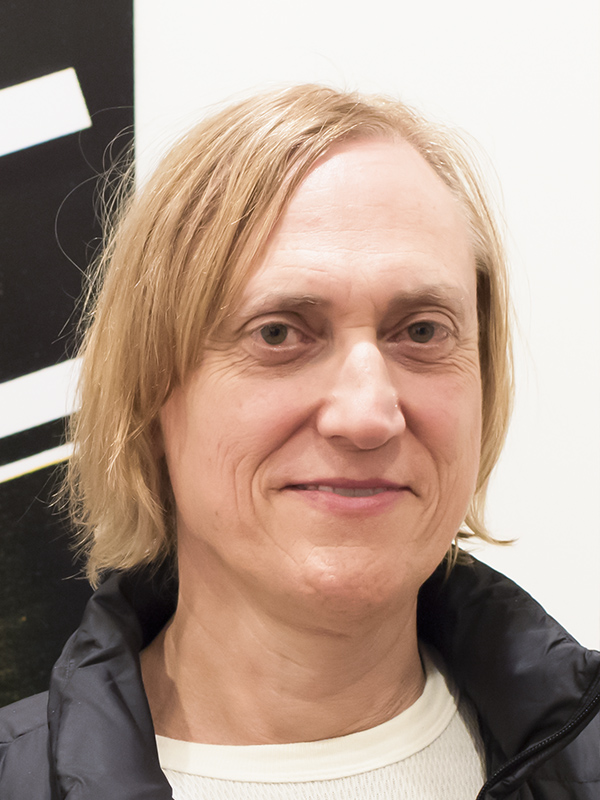* Concert VIII – Thursday, June 6, 2019 *
Sonata for Violin and Keyboard No. 2 in D Major – Joseph Haydn (1773)
I. Allegro
II. Larghetto
III. Tempo di Menuetto
Austrian composer Joseph Haydn (1732-1809) was, during his long lifetime, considered the leading composer of Europe. Although ultimately outshone by Mozart and Beethoven, he is recognized as having done much to develop chamber music, especially in his compositions for string quartets, piano trios and solo works for piano. His symphonies were also hugely successful and important in setting the standard for others to follow. His contributions to the violin and piano duo repertoire though, are more modest and much less known. There are eight published sonatas and of these, all but one were arrangements of piano sonatas, string quartets and other works. Nevertheless, given Haydn’s pivotal role as one of the pioneers of chamber music in Vienna, it’s worth hearing at least part of his contribution to the oeuvre.
The Sonata No 2 in D major was based on his Keyboard Sonata No. 22 in D Major, Hob.XVI:24 which dated from 1773 with a violin part thought to have been added by Haydn’s friend, the English music historian and composer, Dr. Charles Burney. In the original keyboard-only version, the first movement features two-part writing that alternates with snappy toccata sequences. Some of this brilliance is lost in the violin sonata arrangement, perhaps because the violin part is given slower lines that have the effect of smoothing out the passage work on the keyboard. Nevertheless, the dialogue is often charming and the violin sounds particularly at home in the minor key sonority of the soulful slow movement Larghetto. The final minuet-like movement retains much of the character of the original keyboard work, with the violin taking a supporting role in places where the pianist is called upon to execute passages of filigree, but the violin comes to the fore with the main theme on which the movement begins and concludes.
Sonata for Violin and Piano in E flat major K. 380 – Mozart (1778)
I. Allegro
II. Andante con moto
III. Rondeau. Allegro
The Sonata in E flat K. 380 was the last of the group that became Mozart’s first publication in Vienna after his arrival there when he embarked on his new life as a freelance musician and composer. The set of six included four he wrote in 1781 shortly after his arrival and two more: K. 378 written probably in Salzburg and K. 296 written while he was in Mannheim in 1778. He dedicated the set to Josepha Auernhammer, daughter of a Vienna Councillor and a pupil of Mozart’s, who according to one of his many letters to his father, fell in love with him. He, on the other hand, uncharitably described her as ugly and fat but she was apparently a good enough pianist to partner with the composer in concerts featuring the two-piano Concerto K. 365 and again in the two-piano Sonata in D minor K. 448. While Mozart was often unsparing in his criticism in his letters, he was sufficiently grounded to know when to ingratiate himself with people of influence.
The Sonata opens with a series of declamatory chords that act as punctuation points throughout the movement, often prefacing surprising changes of key. Interest is further sustained with flourishes of sparkling passage work. The opening G minor tonality of the slow movement amps up the emotional heat of the work, and while Mozart soon moves into a major key in the first half of the movement, the sense of yearning returns in the second half more resolutely. The last movement is a jaunty Rondeau featuring a haunting horn theme first announced by the piano and then by the violin. While the mood is generally fun and jovial, Mozart provides an agitated minor mode episode lest we somehow forget that life is not always without strife. The contrast helps to reinforce the feeling of optimism in the rousing ending.

Sonata No. 7 for Violin and Piano in C minor Op. 30 No. 2 – Beethoven (1802)
I. Allegro con brio
II. Adagio cantabile
III. Scherzo: Allegro
IV. Finale: Allegro; Presto
The key of C minor is an iconic key for Beethoven as he used it repeatedly for some of his stormiest and most dramatic works including the Pathétique Sonata for solo piano, the Symphony No. 5, his String Quartet No. 4 Op. 18, and the Piano Concerto No. 3 Op. 37. This violin sonata, which belongs to a set of three, lives up in every way to its C minor billing and represents a huge contrast with its much more congenial sister works within Op. 30. The Sonata, built on an almost symphonic scale, is grand, powerful, and full of passion.
It begins quietly with a darkly mysterious theme that leads up to some explosive chords. A second more cheerful march-like theme appears in E flat major but again this is the lull before the storm as Beethoven deploys fast passages that gradually build up to one of the great climaxes of the movement. A dreamlike third theme appears and while seemingly tranquil, is latent with tension. Using these motifs again, Beethoven builds the whole movement into an unforgettable blockbuster. The contrasting second slow movement in A-flat major is both beautiful and heavenly, yet it features towards its conclusion some hints of the C minor troubles that came before it and still to come, with sudden explosive scales in C major played alternately and then together on both piano and violin. The third Scherzo movement cast in C major sounds bright, witty, and almost oafish with strong accents on offbeat notes. But the relentless pull of C minor, like some menacing black hole sucking up anything that strays near it, reasserts itself in the fourth and last movement with uncompromising gravity and power. Unlike the fifth symphony which concludes in a blaze of C major joy, this work ends in the grip of doom cast in its minor key tonality.
* Concert IX – Thursday, June 6, 2019 *
Sonata for Violin and Piano in D major D. 384 – Franz Schubert (1816)
I. Allegro molto
II. Andante
III. Allego vivace

In 1816, at the age of 19, Franz Schubert wrote three violin sonatas that to this day, remain something of an enigma. Like many of Schubert’s lesser known works, these sonatas were not published until after his death and the publisher, Diabelli, decided to rename them “Sonatinas” in order to reach what was then a lucrative market of amateur players. Although Schubert had called them “Sonatas”, the diminutive label stuck, which may have given the erroneous impression that these works were intended more for students than for serious performance. It’s true that the works lend themselves more to the world of Mozart rather than Beethoven, and they make much less technical demands on the players than Beethoven’s sonatas. Indeed, 1816 is several years after Beethoven had written all ten of his groundbreaking violin sonatas including the astonishingly rich and original final sonata in G major op 96. Although Schubert revered Beethoven, he seemed to have written his violin sonatas as if he were blissfully unaware of Beethoven’s works for violin and piano duo. Even so, in the same year as he penned these sonatas, Schubert wrote his Fourth Symphony entitled “The Tragic” so he was by no means a jejune teenager.
Of the three, the Sonata in D major is the closest to deserving the title Sonatina, as it is the most compact being in three movements, all of them surprisingly short. The other two sonatas are more expansive and are each comprised of four movements. The opening thematic statement announced in unison by violin and piano bears a superficial resemblance to the uprising figure in Mozart’s E minor Violin Sonata K. 304 except in Schubert’s case, the tonality is in the major key. The opening is decidedly happy and upbeat, though, as is the case with many of Schubert compositions, he soon flickers back and forth between major and minor mode, saving this work from cheerful banality. The slow movement also begins in A major and then switches to A minor, giving the violin a chance to take wing with a bittersweet lament. The last movement restores the first movement’s carefree mood with a simple 6/8 tune that is alternated with episodes of more contrapuntal vigor which propel us to the final conclusion.
Sonata for Violin and Piano in B flat major K. 454 – Mozart (1784)
I. Largo – Allegro
II. Andante
III. Allegretto
Of the 30 or so Sonatas For Pianoforte and Violin written by Mozart, the Sonata in B flat K. 454 is often cited to be his greatest. Mozart’s biographer Alfred Einstein wrote that “one cannot conceive of any more perfect alternation between the two instruments than that of the first Allegro,” while praising the central Andante (originally marked adagio) for its perfect fusion of “feeling and concertante brilliance.” Mozart explained the sonata’s genesis in a letter of 1784 to his father saying that he had written the work for the debut recital of a visiting 20-year old Italian violinist, Regina Strinasacchi. She had studied at the famous Ospedale della Pietà in Venice where, many decades earlier, Vivaldi had served as music director. Mozart noted that she was “a very good violinist” adding that “she plays with lots of taste and sensitivity.” On April 29, 1784, she performed a concert with Mozart for Emperor Joseph II, where they debuted the sonata although once again, like the premiere of Mozart’s Violin Sonata K. 379, he pulled off the feat of playing a piano part that only existed in his head, having left the sonata’s composition, as he so often did, until the last minute. The manuscript shows the violin and piano parts each written out in different colored inks with barely enough room to squeeze in all of the piano notes. Mozart’s wife Constanze reported that the Emperor noticed the blank sheet of paper on Mozart’s piano through his opera glasses and sent for the composer with his manuscript whereupon the composer was forced to confess, most likely to the monarch’s bemusement.
The sonata opens unusually with a slow introduction, not unlike the opening of Sonata K. 379 although in that work the slow section serves more like a complete movement in its own right. In this Sonata, the brief portentous introduction serves, as Einstein puts it, as a “triumphal arch” through which we are led into a sprightly Allegro. Here, violin and piano unite in presenting the opening theme and then exchange riffs in a lively dialogue that makes both players equal participants. The second movement, Andante, too, is a masterpiece of duo composition which has the feeling of a richly embellished aria that visits some remote keys in its development. The Allegretto finale is a spacious rondo that’s as playful as it is inventive.
Sonata No. 8 for Violin and Piano in G major Op. 30 No. 3 – Beethoven (1802)
I. Allegro assai
II. Tempo di minuetto, ma molto moderato e grazioso
III. Allegro vivace
This sonata was the last in a set of three composed while Beethoven was staying in the town of Heiligenstadt just outside Vienna where he had been suggested by his doctor to rest. Whilst there, Beethoven wrote his famous Heiligenstadt Testament, a letter to his brothers, which reflected his despair over his increasing deafness. Somehow he found the fortitude not to give up on life but dedicate himself to his artistic destiny. Given this historical background, the third member of this set is a surprisingly charming and witty work. Overall it’s a huge contrast from the previous sonata Op. 30 No. 2 in C minor, which like many of his works in the same key (the Pathétique Sonata, Symphony No. 5, and the last piano sonata op. 111) is full of storminess and brooding. Perhaps the G major sonata was some kind of confirmation that Beethoven had indeed accepted his fate concerning his health while seizing life with a renewed vigor and intention to make the best of what he could do with his boundless creativity. Music now had become his dominant means of interacting on an emotional or personal level with other people, and his whole raison d’être.
The first movement begins on a classic Mannheim rocket, an uprising arpeggio motif that was first pioneered by Mannheim composers. What follows is full of good humor with sudden, almost comical offbeat sforzandos and interesting harmonic diversions. The middle movement initially takes on the form of a minuet but extends into something more intricate with a series of beautiful variations on the thematic ideas. The final movement, a lively rondo, features a catchy melody that Beethoven uses to great effect accompanied by what could be peasant’s bagpipe droning away in the bass. The abrupt transition to E-flat major in the coda provides an unexpected change of direction – a typically Beethovenian touch just before for the short but rousing ending.

About the author: Julian Brown is a writer and violinist based in Mountain View, California. Born in the UK, he lived for many years in London and has performed in both London and the San Francisco Bay Area. He is the co-founder of the Cal Arte Ensemble, which performs numerous chamber concerts a year in the Bay Area, aiming to make great music available to a wider audience. He also serves as concertmaster for several orchestras including the Cambrian Symphony and the Palo Alto Philharmonic. For more information see https://www.julianbrown.xyz.

